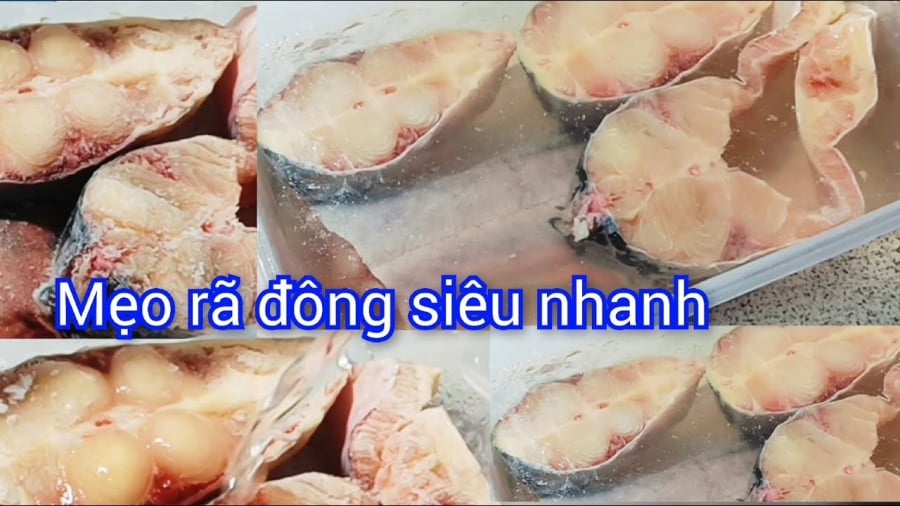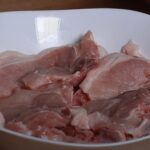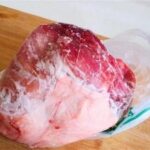Quick Tips for Thawing Meat

Express Thawing Tips for Fish: Soft and Delicious
Thawing Meat with Sugar
Sugar not only helps to quickly defrost meat but also keeps it tender and tasty when cooked. Mix 2 spoons of sugar with a mixture of cold and hot water (ratio 5:1) to create a lukewarm solution of about 40 degrees Celsius. Soak the frozen meat in this solution for about 7 minutes to achieve a soft texture.
Thawing Meat with Salt and Vinegar
This method uses readily available ingredients that you can easily find in your kitchen. Prepare a small basin and mix a spoonful of salt with a dash of vinegar. Stir well until the salt is fully dissolved. Then, soak the meat in this solution. It is important to note that the meat should not be placed in the solution at the beginning to prevent it from becoming bland. Always ensure that the salt and vinegar are well combined before adding the meat to retain its freshness and sweetness during cooking.
Tips for Quickly Defrosting Fish While Keeping it Fresh and Intact
Thawing Fish with Salt and Lemon
Salt firms up the fish, acts as an antibacterial agent, and enhances its flavor. Lemon effectively removes any fishy odor, resulting in a more delicious dish. Place the frozen fish in a container and add 1-2 spoons of salt and 2 lemon slices. Finally, pour water to cover the fish and close the container. Wait for about 5-10 minutes to defrost before cooking.
Thawing Fish with Vinegar
This method is quite similar to the previous one using lemon. However, it usually takes a bit longer to defrost fish with vinegar. Place the cleaned frozen fish in a container, large bowl, or zip bag. Pour water to cover the fish and add about 50 ml of white vinegar. Although vinegar can accelerate the defrosting process, it may take up to 20-25 minutes for the fish to fully thaw.

Using coarse salt, ginger, and lemon (or vinegar) is the secret to quickly defrosting fish while preserving its freshness and quality.
Defrosting Food in the Microwave
When you need to defrost something quickly, the microwave is a handy tool. It’s important to remove any unsafe packaging like foam boxes, plastic bags, or cardboard before placing the food in a safe container or covering it with microwave-safe foil. This prevents water from leaking out. Note that the high-frequency electric field in the microwave causes internal friction in the food, leading to heating and thawing without cell rupture.
Timing and temperature are crucial when defrosting in the microwave. Insufficient heat may result in slow defrosting and bacterial growth. Conversely, excessive heat may cook the outer layer while the inside remains frozen. Therefore, it is essential to match the time and temperature to the weight of the food.
With this method, the food should be cooked immediately, as the meat may have partially cooked during the process. Additionally, frozen meat can be directly roasted or baked in the microwave without prior thawing.
What to Avoid When Defrosting Food
Leaving Food to Thaw at Room Temperature
Allowing frozen food, especially meat, to thaw at room temperature provides an ideal environment for bacterial growth and spoilage. This is a common cause of food poisoning and diarrhea, especially for individuals with a sensitive digestive system.
Defrosting Food in Hot Water
While hot water can speed up the defrosting process, it may compromise the quality of the food. High temperatures promote bacterial growth and can break down the nutritional content of the food.
Refreezing Thawed Food
Refreezing thawed food is unsafe as it provides an opportunity for bacterial growth. Thawed meat, in particular, is susceptible to bacterial contamination, and refreezing only encourages bacterial proliferation, leading to reduced food quality and an increased risk of food poisoning.
Overcooking Frozen Food
Overcooking frozen food to compensate for its frozen state can lead to nutrient loss and affect its taste and texture. Directly cooking frozen meat may result in uneven cooking, with the outer part being overcooked while the inner part remains raw.



































